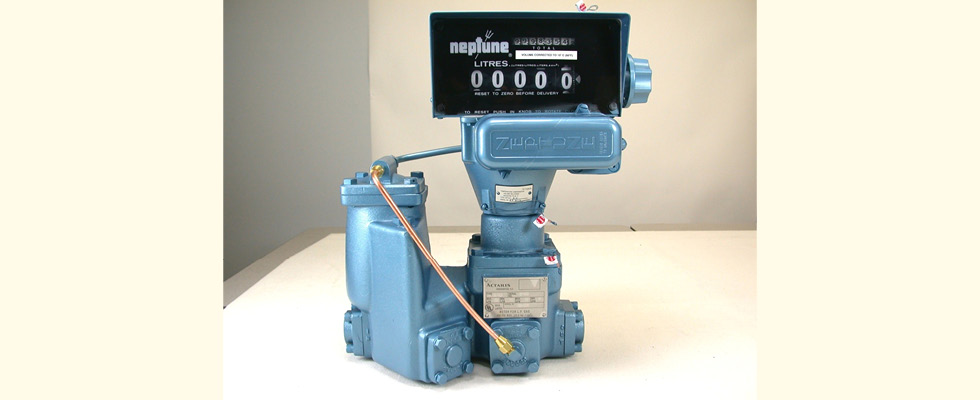
Since the turn of the century, the propane industry has experienced two significant code changes that impacted the way we operate. The OPD (overfill protection device) cylinder valve mandate was instituted in 2002. Nine years later, 2011 NFPA 58 bulk storage upgrade requirements came into effect. Both new codes were mandated to enhance consumer and industry safety and benefited everyone who handles propane. We will soon experience a third major code change to the betterment of both propane marketers and end users alike.
Beginning in 2026, or 15 years past the 2011 NFPA 58 bulk storage upgrade requirement, a new and major code change will be implemented. The new change is not coming from NFPA 58 (our primary code book for the safe handling of propane) but from an ancillary code book, Handbook 130. Handbook 130 governs weights, measures and the sale of commodities. The mandated change will affect many more installations than the 2011 NFPA 58 bulk storage upgrade ever did.
In the 2024 version of Handbook 130, changes are laid out for small liquid propane meters. Per Handbook 130, small LP liquid meters are defined as those having a flow rate of less than 20 gallons per minute. These small meters will now require automatic temperature compensation to meet code to dispense propane by volume. Unless marketers operate in one of the few states that currently require automatic temperature compensation for all liquid propane meters, their installations will be included in those affected.

Automatic temperature compensation (ATC) corrects the volume of propane being measured to 1 gallon at 60 F. A meter without ATC in cooler months allows consumers to get more propane than what they’re paying for and, alternatively, less propane in the summer.
A non-ATC meter at 60 F provides 5 true gallons of propane in a 20-pound cylinder. Let’s say the ambient temperature is 40 F; a cylinder will be filled with 5.16 gallons of propane while the meter’s register shows five gallons. At 80 F, a consumer receives 4.84 gallons of propane. Again, the register will read 5 gallons. At $3.99 per gallon of propane, for example, the difference in propane dispensed and the reading on the register equates to $0.64 either way.
Propane marketers will sell a true gallon of propane, and the consumer will be paying for a true gallon, at any temperature, with automatic temperature compensation.
Prior to the 2024 edition, small, low-flow liquid propane meters were exempt from requiring automatic temperature compensation. The change in the 2024 version of Handbook 130 will affect thousands of liquid propane dispensing meters in the field. Think about how many dispensing stations are in your town, your county or your area of service. How many fueling stations are in your area for fleets? This code change will have a far-reaching impact on the propane industry and the thousands of dispensing installations across the country.
As we move forward with this new code, please keep the years 2026 and 2030 present in your mind. Per Section 2.21.2 Metered Sales by Liquid Volume: By Jan. 1, 2026, all liquid propane meters with a flow rate of less than 20 GPM (gallons per minute) placed into service will be mandated to have automatic temperature compensation. This will apply to all new installations and existing installations that are upgraded due to equipment failure, or installations that are moved and placed back into service. This is a new change in the 2024 edition of Handbook 130, as low-flow liquid propane meters have operated under an exemption from automatic temperature compensation since 1986.
The second date to remember: By Jan. 1, 2030, all liquid propane meters in service will require automatic temperature compensation to dispense propane. The deadline to upgrade meters already in service is listed in the 2024 version of handbook 130 2.21.1 section C.
As the code is currently written, there is no legacy provision in the 2024 Handbook 130 code for meters currently in service. So, the last day of service for non-temperature compensated meters is Dec. 31, 2029. Please note there is currently no legacy provision in the new code.
The lack of a legacy provision will force in-service meters to either be upgraded with an automatic temperature compensation kit or to be replaced with a meter with factory-installed automatic temperature compensation. Depending on the meter model installed, upgrading to an automatic temperature compensation kit will cost between $1,700 to $2,000 on average per meter. The cost to meet code may be higher if your meter is of a type that is not upgradable.
Once an upgrade kit is installed, the meter will then need to be recalibrated. Some states may require a new or modified meter placed into service to be checked and certified by an independent mobile propane prover. The cost required to meet certification will likely be passed along to the consumer. However, propane marketers initiating the upgrade to remain code compliant will bear any initial costs.
The propane industry has just under six years to begin the process of upgrading (or retiring and replacing) the thousands of non-temperature compensated, low-flow, propane-dispensing meters currently in service. Develop an upgraded plan today to spread the cost of the new code change over the next five years to ensure your dispensing meters are in code compliance by 2030.


